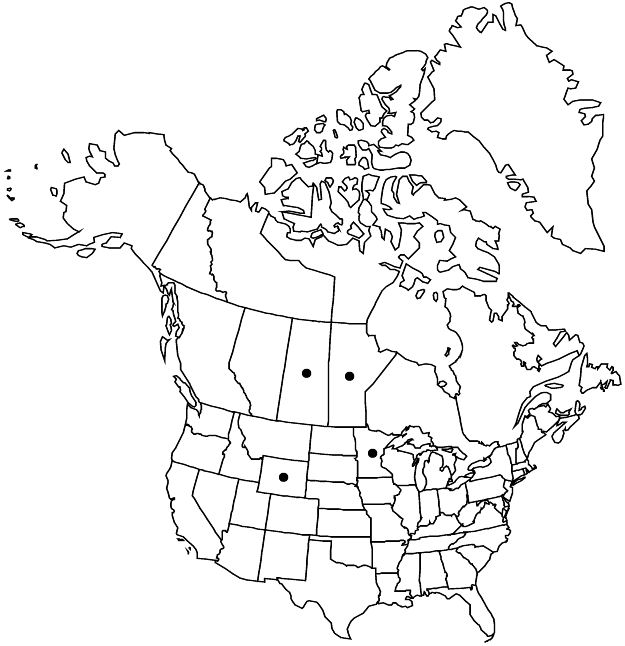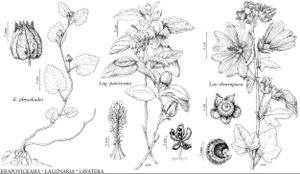Difference between revisions of "Lavatera thuringiaca"
Sp. Pl. 2: 691. 1753.
FNA>Volume Importer |
FNA>Volume Importer |
||
| Line 18: | Line 18: | ||
|name=Althaea ambigua | |name=Althaea ambigua | ||
|authority=(de Candolle) Alefeld | |authority=(de Candolle) Alefeld | ||
| − | }}{{Treatment/ID/Synonym | + | }} {{Treatment/ID/Synonym |
|name=A. vitifolia | |name=A. vitifolia | ||
|authority=(Schur) Borbás | |authority=(Schur) Borbás | ||
| − | }}{{Treatment/ID/Synonym | + | }} {{Treatment/ID/Synonym |
|name=Malva thuringiaca | |name=Malva thuringiaca | ||
|authority=(Linnaeus) Visiani | |authority=(Linnaeus) Visiani | ||
| Line 39: | Line 39: | ||
|elevation=0–1800 m | |elevation=0–1800 m | ||
|distribution=Man.;Sask.;Minn.;Wyo.;c;e Europe;c Asia. | |distribution=Man.;Sask.;Minn.;Wyo.;c;e Europe;c Asia. | ||
| − | |discussion=<p>Lavatera thuringiaca is showy and occasionally cultivated as a garden ornamental. There are only a few records of the species as escaped or naturalized in North America. Old reports have indicated its presence in New Brunswick and Ontario based on escapes from cultivation that did not become established; there was also an apparently erroneous report from Quebec.</p> | + | |discussion=<p><i>Lavatera thuringiaca</i> is showy and occasionally cultivated as a garden ornamental. There are only a few records of the species as escaped or naturalized in North America. Old reports have indicated its presence in New Brunswick and Ontario based on escapes from cultivation that did not become established; there was also an apparently erroneous report from Quebec.</p> |
|tables= | |tables= | ||
|references= | |references= | ||
| Line 64: | Line 64: | ||
|publication year=1753 | |publication year=1753 | ||
|special status=Selected by author to be illustrated;Introduced | |special status=Selected by author to be illustrated;Introduced | ||
| − | |source xml=https://jpend@bitbucket.org/aafc-mbb/fna-data-curation.git/src/ | + | |source xml=https://jpend@bitbucket.org/aafc-mbb/fna-data-curation.git/src/8f726806613d60c220dc4493de13607dd3150896/coarse_grained_fna_xml/V6/V6_506.xml |
|subfamily=Malvaceae subfam. Malvoideae | |subfamily=Malvaceae subfam. Malvoideae | ||
|genus=Lavatera | |genus=Lavatera | ||
Revision as of 17:48, 18 September 2019
Herbs, sometimes appearing subshrublike, perennial, usually 1.5–2 m. Stems short stellate-tomentose. Leaves reduced distally; stipules linear to oblanceolate, 6 mm; petioles equaling blades proximally, progressively reduced distally on stem to 1/4 blade length; blade grayish, cordate-orbiculate, usually palmately 3–5-lobed, usually 7–9 cm, lobes subacute to obtuse, margins crenate, apex acute, surfaces short-hairy. Inflorescences solitary flowers or racemelike, usually not congested, pedicellate. Pedicels 2–5 cm, not elongating in fruit; involucellar bractlets connate in lower 1/3, lobes wide-ovate, usually shorter than calyx, apex obtuse to abruptly acute. Flowers showy; calyx divided halfway, campanulate, puberulent, not hispid, lobes narrowly acute to acuminate, ± enclosing fruit; corolla 3–7 cm diam., petals pale purplish pink, only occasionally with somewhat darker pink veins, 2–3.5 cm, bases not overlapping (calyx surface visible between), apex notched; staminal column glabrous; anthers on upper 3/4 of stamen column, pale pink to white; style 20–22-branched (same number as locules). Mericarps 20–22, glabrous. 2n = 42.
Phenology: Flowering Jun–Oct.
Habitat: Disturbed habitats
Elevation: 0–1800 m
Distribution

Man., Sask., Minn., Wyo., c, e Europe, c Asia.
Discussion
Lavatera thuringiaca is showy and occasionally cultivated as a garden ornamental. There are only a few records of the species as escaped or naturalized in North America. Old reports have indicated its presence in New Brunswick and Ontario based on escapes from cultivation that did not become established; there was also an apparently erroneous report from Quebec.
Selected References
None.
